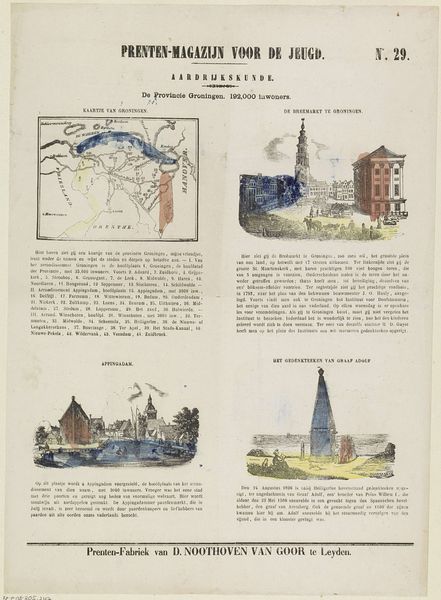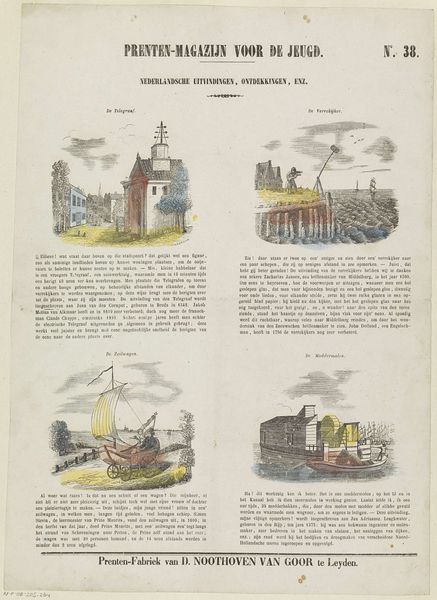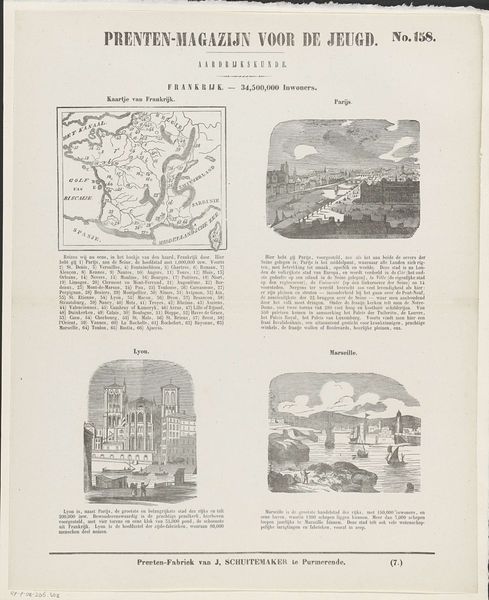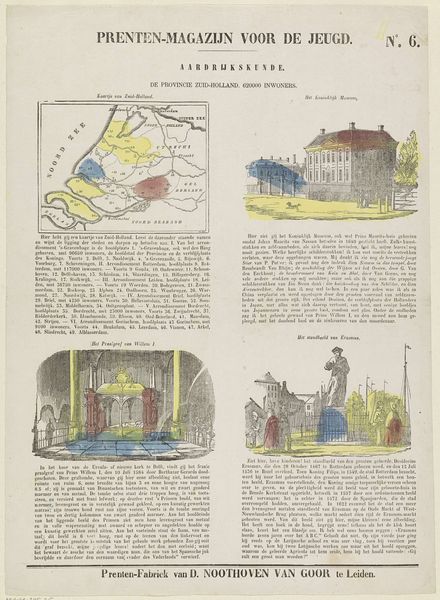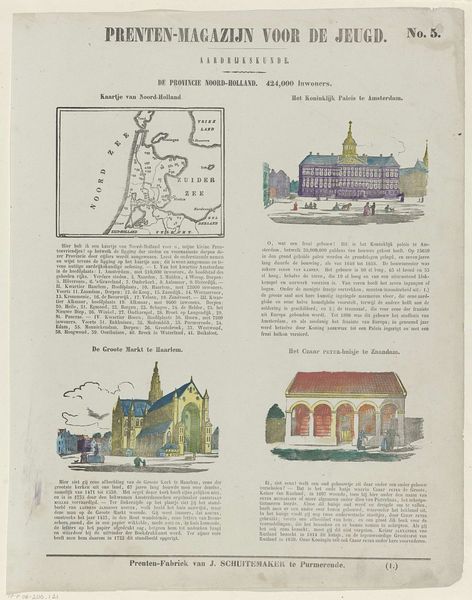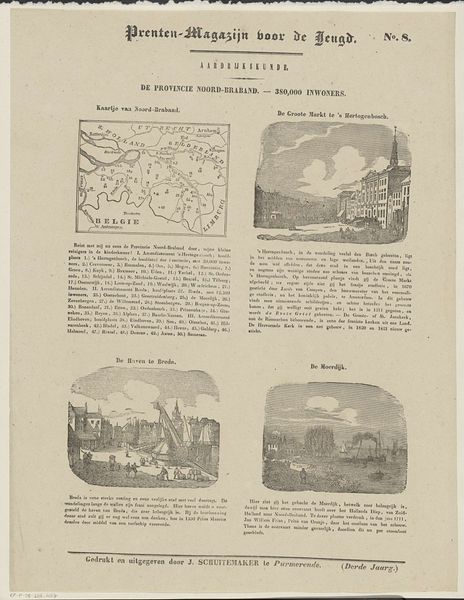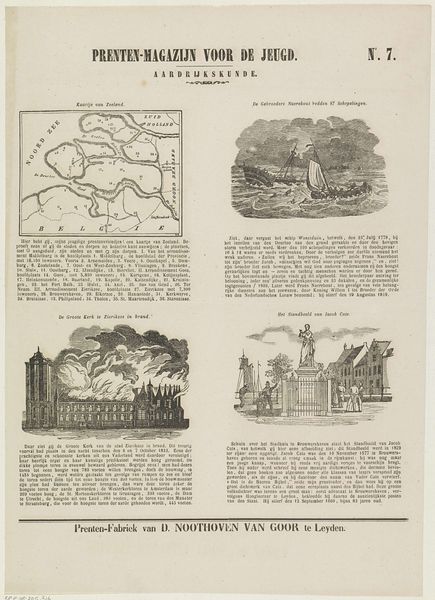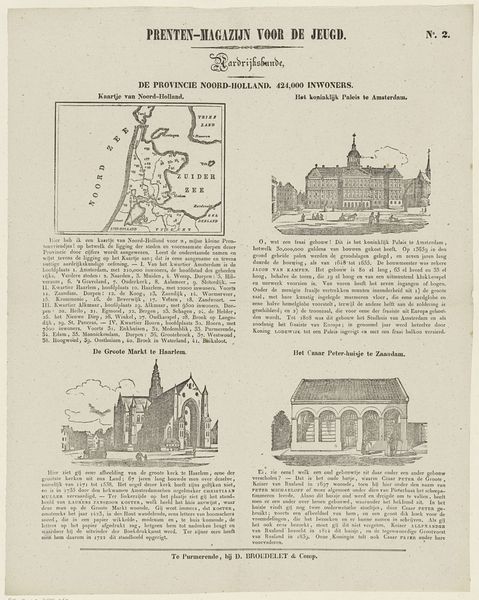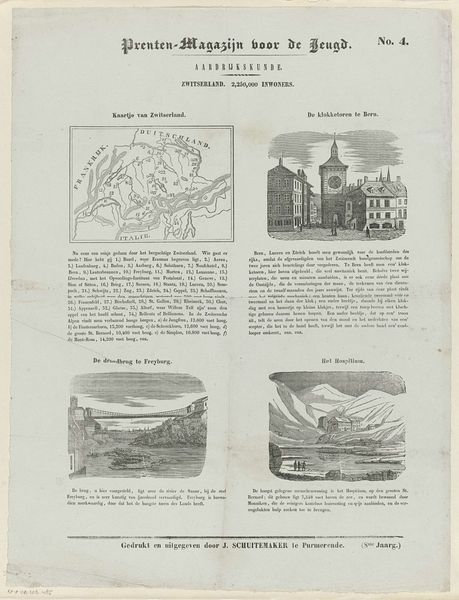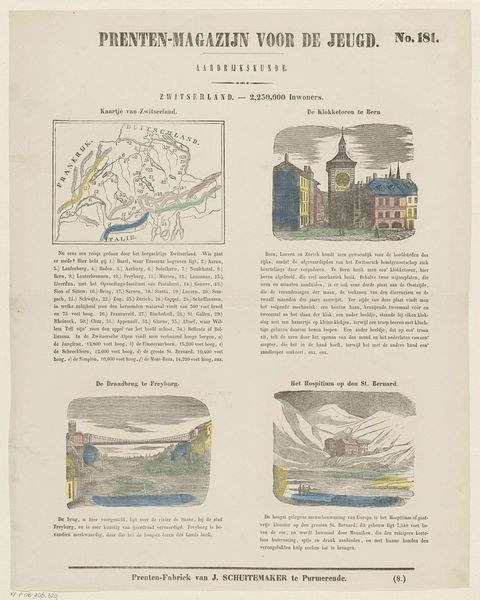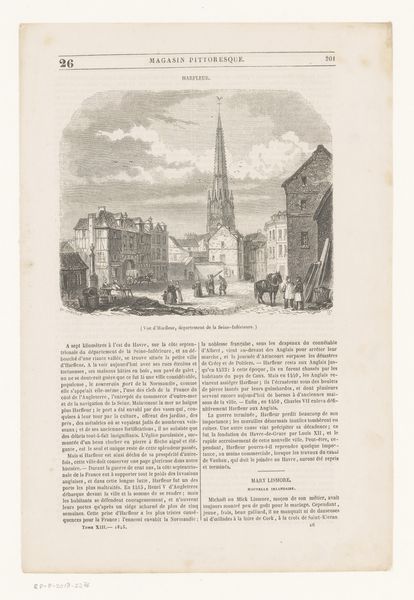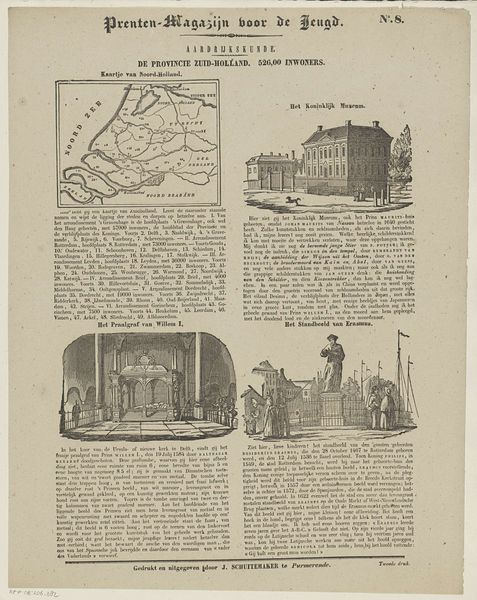
print, engraving
#
dutch-golden-age
# print
#
landscape
#
cityscape
#
engraving
Dimensions: height 414 mm, width 326 mm
Copyright: Rijks Museum: Open Domain
Editor: This print from 1850, titled "De provincie Utrecht. 91,000 inwoners" by Jan Schuitemaker, feels almost like an infographic. It's a mix of map and architectural studies. What stands out to you? Curator: It's fascinating how this piece, published in a children's magazine, blends geographical information with architectural depictions. I immediately consider its pedagogical function—how did it shape young minds’ understanding of regional identity and belonging? Think about it, the printing press allowed the easy dissemination of narratives. How does this curated view of Utrecht impact their developing sense of self in relation to the region and the nation? Editor: I hadn't thought of it that way, but it does feel curated. It almost makes Utrecht seem like a desirable destination. Curator: Exactly! But also consider who this "desirable destination" is marketed toward and the implications of the almost complete absence of the laboring class that likely built and maintained the very structures depicted. Whose stories are elevated and whose are erased, and what impact does that have on collective memory and historical consciousness? Editor: So it's not just a simple representation of the province but also a reflection of the social hierarchy and values of the time? Curator: Precisely! The emphasis on specific landmarks like churches subtly reinforces dominant religious and cultural norms. And what about the underrepresentation of diverse communities and perspectives in this seemingly benign educational material? Does it perhaps encourage critical thinking around issues of representation and historical narrative? Editor: I see what you mean. I thought it was just a pretty landscape, but it’s really loaded with context. Curator: Every artifact, including what seems to be informative visual material, has underlying values, reflecting how those with power perceive and portray the world around them. So we must interrogate the assumptions and ideologies embedded within these images and understand their lasting impact on shaping cultural narratives. It invites critical questioning, wouldn’t you say?
Comments
No comments
Be the first to comment and join the conversation on the ultimate creative platform.
